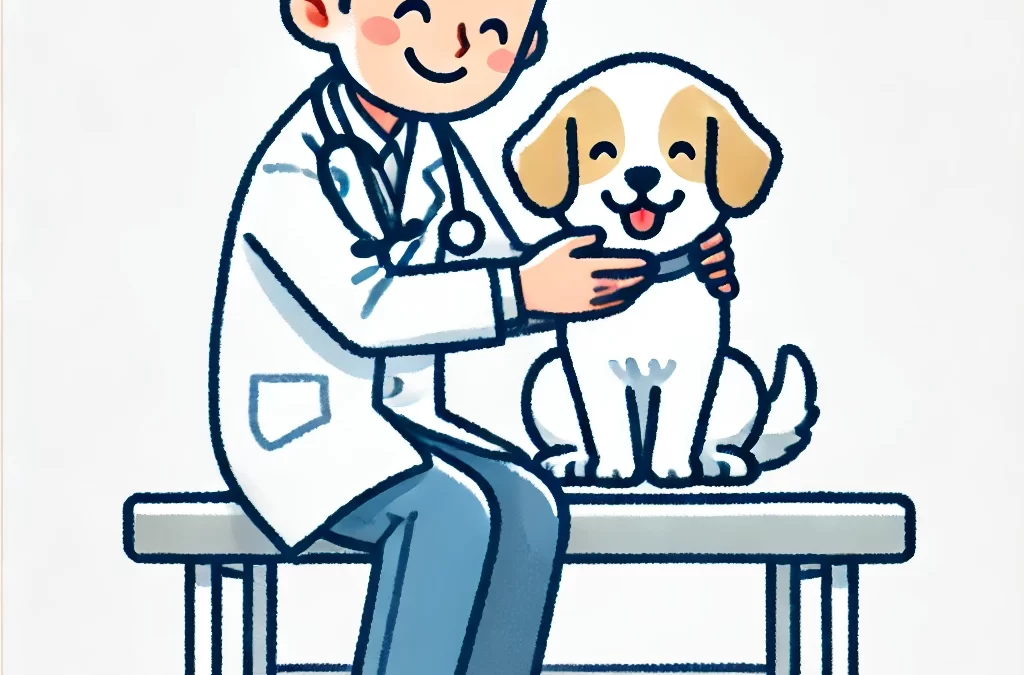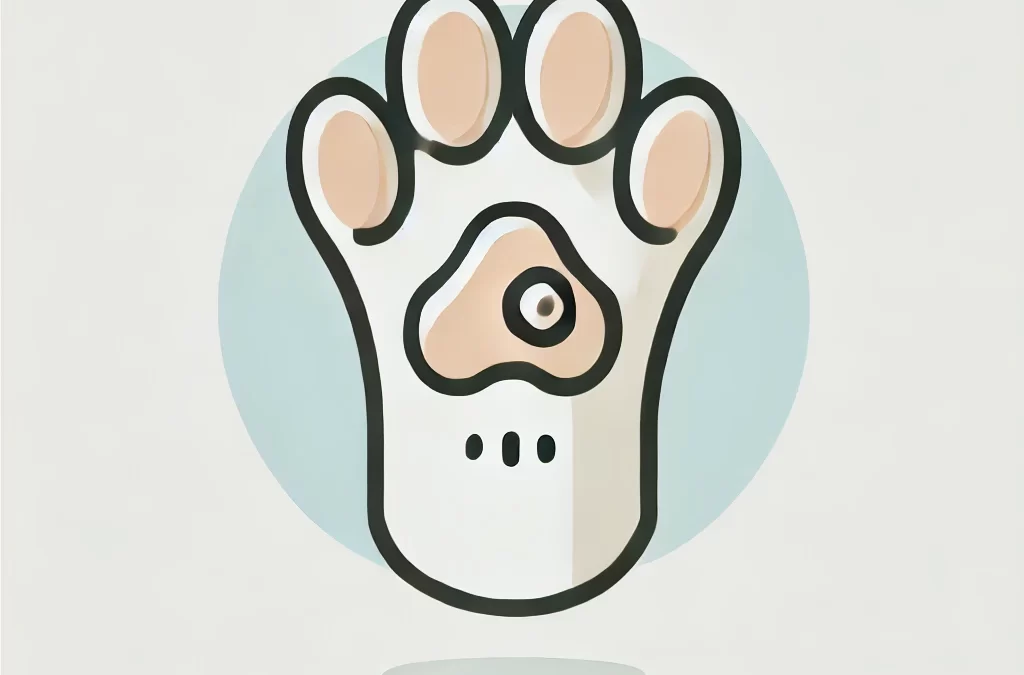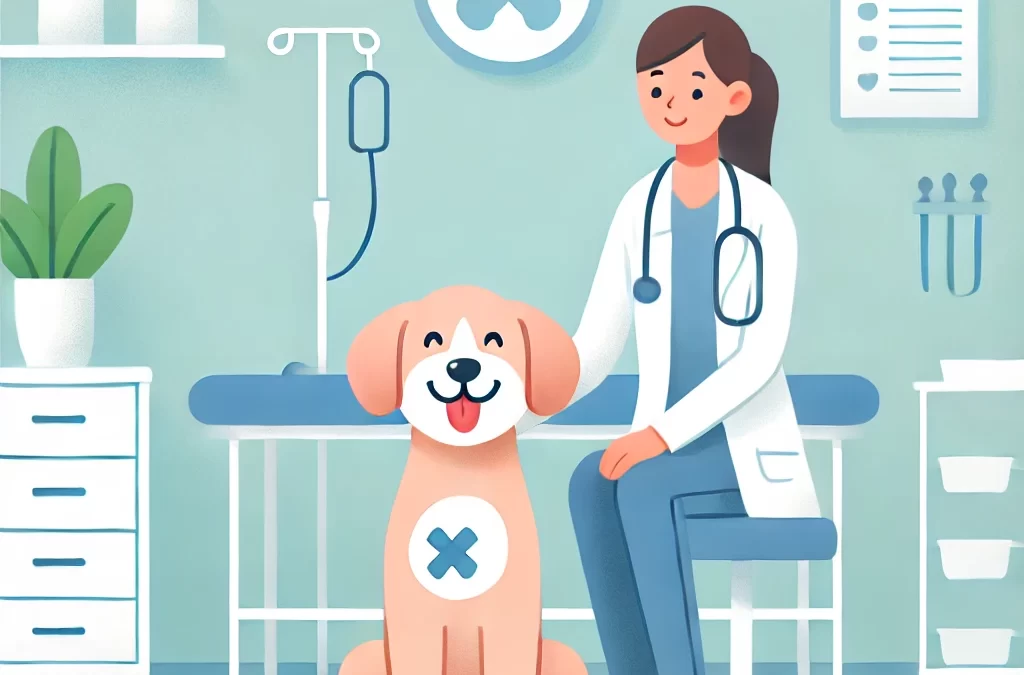
by TCMVET | Nov 29, 2024 | Dog Cancer & Tumors
When faced with the emotional and financial burden of a dog’s tumor diagnosis, many pet owners feel overwhelmed by the costs associated with treatment. However, low-cost dog tumor removal is not only possible but also accessible with the right resources and a bit of creativity. This guide explores unique and practical ways to ensure your furry friend gets the care they need without straining your wallet.
Understanding Tumor Types and Necessity for Removal
Not all tumors require immediate surgical intervention. Some, such as lipomas (benign fatty tumors), may pose little to no threat to your dog’s health. Consulting with your veterinarian to assess the nature of the tumor is the first step toward making an informed decision. If removal is deemed necessary, explore cost-effective options to address the issue.
Creative Approaches to Affordable Dog Tumor Removal
Vet Schools: Learning and Saving
Veterinary teaching hospitals often provide lower-cost services as students, under the guidance of experienced professionals, perform procedures. While costs are reduced, the quality of care remains high, making this an excellent option for budget-conscious pet owners.
Non-Profit Veterinary Clinics
Many non-profits and animal welfare organizations offer subsidized veterinary care, including tumor removal. Research organizations in your area that support low-income pet owners, such as the Humane Society or SPCA branches, which may provide financial aid.
Crowdfunding Platforms
Platforms like GoFundMe or Waggle allow pet owners to share their dog’s story and raise funds for medical procedures. A heartfelt narrative and photos can encourage donors to contribute to your pet’s well-being.
Payment Plans with Local Vets
Some veterinary clinics are open to setting up payment plans for costly surgeries. This option lets you spread the cost over several months, easing the immediate financial burden.
DIY Recovery and Aftercare
While the surgery itself should always be performed by a licensed veterinarian, you can save money by managing post-operative care at home. Learn how to clean wounds, administer medications, and create a comfortable recovery space for your dog to minimize additional clinic visits.
Exploring Alternatives: When Surgery Isn’t an Option
If surgery is beyond your financial means or not recommended due to your dog’s health, alternative therapies can help manage the tumor. Some holistic options include:
- Herbal Supplements: Natural remedies like turmeric, frankincense, and TCM formulas such as Chuanxiong have been noted for their anti-inflammatory properties.
- CBD Oil: Full-spectrum CBD oil may help reduce inflammation and support overall well-being.
- Dietary Adjustments: Anti-cancer diets focusing on whole, low-carb, high-protein foods may slow tumor growth.
Preventative Measures to Avoid Future Costs
Preventative care can reduce the likelihood of tumors forming in the first place. Regular vet check-ups, a balanced diet, and avoiding exposure to carcinogens like tobacco smoke can promote a healthier life for your dog. Early detection is key; small tumors are generally easier and less expensive to treat than advanced ones.
Compassion and Ingenuity: The Keys to Affordable Care
Finding low-cost options for dog tumor removal requires resourcefulness and determination. By leveraging non-profits, community support, and alternative therapies, you can ensure your dog gets the care they need without financial hardship. Remember, your creativity and love for your pet can pave the way for compassionate and effective solutions.
Whether it’s through connecting with a network of affordable care providers or embracing holistic approaches, your dog’s health doesn’t have to come at an insurmountable cost. Let this journey remind us of the unwavering bond between pets and their owners—a relationship worth every effort.

by TCMVET | Nov 28, 2024 | Dog Cancer & Tumors
When your dog starts limping or licking its paws excessively, the culprit might be an interdigital cyst—a condition both common and concerning. While these cysts are typically benign, their appearance can sometimes lead pet owners to question: could this be a sign of something more sinister, like cancer? Let’s delve into this topic with fresh eyes, exploring the distinctions, potential connections, and how to best approach these issues for your dog’s well-being.
What Are Interdigital Cysts?
Interdigital cysts, also known as furuncles, are fluid-filled lumps that form between a dog’s toes. They result from inflammation of the hair follicles in the interdigital spaces, often caused by:
- Trauma: Cuts or scrapes on the paws.
- Allergies: Environmental or food allergies leading to excessive licking.
- Genetic Predispositions: Certain breeds, such as Bulldogs and Labrador Retrievers, are more prone.
- Foreign Bodies: Splinters or debris embedding into the skin.
While interdigital cysts are usually non-cancerous, their recurring nature can cause discomfort, infection, and even lameness.
Can Interdigital Cysts Be Linked to Cancer?
The short answer: rarely, but not entirely impossible.
Most interdigital cysts are benign and not related to cancer. However, chronic inflammation caused by persistent cysts can potentially create an environment conducive to more severe conditions over time. This phenomenon, known as chronic inflammation-driven carcinogenesis, highlights how prolonged irritation may increase the risk of malignant changes in tissues.
Moreover, in very rare cases, lumps initially identified as cysts might actually be something more serious, such as:
- Squamous Cell Carcinoma (SCC): A type of skin cancer that can develop in the paw pads or between toes.
- Mast Cell Tumors (MCTs): These tumors, though commonly found elsewhere, can occasionally appear in unusual locations like the paws.
- Melanoma: Malignant melanomas may also manifest near the paw pads and resemble cyst-like growths.
How to Differentiate Between Cysts and Cancer
A proper diagnosis is crucial. Here’s what to watch for:
- Shape and Texture: Cysts are usually soft, round, and filled with fluid. Tumors may feel hard and irregular.
- Growth Rate: Benign cysts grow slowly, while malignant tumors often grow rapidly.
- Color and Ulceration: Cancerous growths might be discolored, ulcerated, or bleed spontaneously.
- Response to Treatment: Cysts often respond to antibiotics, anti-inflammatory medications, or drainage, whereas cancerous growths do not.
Veterinarians may recommend diagnostic tests like fine-needle aspiration (FNA) or biopsy to confirm whether a growth is benign or malignant.
Holistic and Preventative Care for Paw Health
Even if a cyst is non-cancerous, prevention and holistic care can improve your dog’s quality of life:
- Paw Hygiene: Regular cleaning reduces the risk of foreign objects embedding in your dog’s paws.
- Dietary Adjustments: Omega-3 fatty acids and anti-inflammatory supplements can reduce inflammation and promote skin health.
- Natural Remedies: Products like TCMVET Baituxiao or turmeric-based creams may help reduce inflammation in recurrent cysts.
- Moderated Exercise: For active dogs prone to trauma, consider softer terrains for walks to avoid cuts and abrasions.
When Surgery or Advanced Treatment is Needed
For persistent or complicated cysts, surgery might be required to remove the affected tissue. In rare cases of suspected malignancy, amputation of the affected toe may be necessary to prevent the spread of cancer. Advanced therapies like laser surgery or cryotherapy can also provide non-invasive solutions for certain cases.
The Takeaway: Knowledge is Power
Interdigital cysts, while common and mostly benign, should never be ignored. Staying vigilant, consulting your veterinarian, and adopting a proactive approach can make all the difference in ensuring your dog’s paw health. And remember, even if the specter of cancer arises, early detection and modern treatments offer promising outcomes.
Our furry friends rely on us for care and protection. By understanding the nuances of conditions like interdigital cysts, we can give them the best chance at a long, healthy, and happy life.

by TCMVET | Nov 28, 2024 | Dog Cancer & Tumors
When a beloved pet is diagnosed with a tumor, the emotional weight can feel overwhelming. Surgery often becomes the focal point of hope, but is it always the best option? Let’s explore the transformative journey of pet tumor surgery, the alternatives reshaping the landscape, and how holistic care is redefining healing for our furry companions.
A Historical Perspective: Surgery as a Lifesaver
In the early days of veterinary medicine, surgery was the definitive response to tumors. With advancements in technology, techniques such as laser surgery and robotic assistance have become common, making procedures safer and more precise. For example, oncological surgeries for pets today can achieve margins as small as a millimeter, preserving healthy tissue while removing the tumor.
However, the surgical path isn’t without its risks. Factors like the pet’s age, the size and location of the tumor, and underlying health conditions all influence the success rate. Despite its effectiveness in removing tumors, surgery often addresses only the symptom—not the root cause.
The Alternatives: A Growing Spectrum of Options
While surgery remains a cornerstone, alternative approaches are gaining traction:
- Cryosurgery: Using extreme cold to freeze and destroy tumor cells, this method is less invasive and ideal for superficial growths.
- Targeted Therapies: Innovations in veterinary medicine, such as immunotherapy and molecularly targeted drugs, are allowing for non-surgical tumor management. These treatments aim to shrink tumors or slow their progression.
- Natural Therapies: Herbal remedies like TCMVET Baituxiao and hemp-based supplements are becoming popular for their ability to support the immune system and inhibit tumor growth with minimal side effects.
- Palliative Care: For pets with inoperable tumors, comfort becomes the priority. Pain management, dietary adjustments, and physiotherapy play crucial roles in maintaining quality of life.
Weighing the Decision: To Cut or Not to Cut?
Choosing surgery or an alternative depends on multiple factors:
- Tumor Type: Benign tumors may not necessitate immediate surgery, while malignant growths often require prompt action.
- Quality of Life: Is the procedure likely to improve the pet’s well-being, or could it introduce undue stress and pain?
- Owner’s Goals: Some owners prioritize longevity, while others focus on comfort and holistic care.
Consultation with a veterinary oncologist is vital to ensure a tailored treatment plan that considers the pet’s unique needs.
Holistic Healing: Beyond the Scalpel
Post-surgical care is just as important as the procedure itself. Increasingly, holistic methods are being integrated into recovery plans:
- Nutritional Therapy: Diets rich in antioxidants, omega-3 fatty acids, and cancer-fighting compounds are pivotal.
- Acupuncture and Massage: These therapies can alleviate pain, boost circulation, and accelerate healing.
- Emotional Support: Pets, much like humans, benefit from a stress-free environment during recovery. Spending quality time, engaging in gentle play, and maintaining routines can uplift their spirits.
The Future of Pet Tumor Surgery
The field of veterinary oncology is evolving rapidly. Innovations such as AI-guided diagnostics and 3D-printed surgical tools promise even more precise and effective interventions. Additionally, research into the genetic basis of tumors in pets is paving the way for preventative strategies.
As these advancements unfold, the narrative around pet tumor surgery is shifting—from fear to hope, from reactive to proactive care.
A Final Thought
Whether opting for surgery or exploring alternatives, the ultimate goal is always the same: giving our pets the best life possible. With compassion, informed decision-making, and access to cutting-edge care, we can navigate this challenging chapter and emerge stronger—together.
When faced with a tumor diagnosis, remember: You are your pet’s advocate and biggest champion. Every decision you make comes from love, and that makes all the difference.

by TCMVET | Nov 27, 2024 | Dog Cancer & Tumors
Tigilanol tiglate, a groundbreaking treatment for certain types of canine tumors, has been a game-changer in veterinary oncology. As pet owners explore this innovative therapy, many are concerned about its cost. But does the conversation about cost go beyond just the monetary figure? Let’s dive into a unique perspective on the value of tigilanol tiglate—looking not just at what it costs, but what it offers in return.
Understanding Tigilanol Tiglate
Developed from the seeds of the blushwood tree, tigilanol tiglate (marketed as Stelfonta®) offers a non-surgical solution to mast cell tumors in dogs. Administered via injection, it works by destroying tumor cells and encouraging wound healing, often with visible results within days. This innovative therapy is particularly appealing for dogs that are not candidates for surgery due to age, health, or tumor location.
The Financial Costs
The price of tigilanol tiglate can vary widely, depending on several factors:
- Tumor Size
The drug is priced based on dosage, which is determined by the tumor’s volume. Larger tumors require higher doses, increasing the cost.
- Veterinary Fees
The cost of administration includes pre-treatment assessments, sedation, the procedure itself, and follow-up care. These professional fees can vary by location and clinic.
- Post-Treatment Care
While many dogs recover quickly, some may require additional wound management, which can add to the overall expense.
On average, the cost for tigilanol tiglate treatment ranges from $500 to $2,500 or more, depending on the above factors.
The Emotional Costs
While financial expenses are significant, the emotional toll of treating a beloved pet must also be considered. Tigilanol tiglate offers a compelling alternative to invasive surgery, reducing the stress and recovery time for both pets and their owners.
- Less Anxiety for Your Dog
Surgery often involves longer recovery periods and higher risks, particularly for older dogs. Tigilanol tiglate minimizes these challenges, offering a less invasive solution.
- Peace of Mind for Owners
Watching a tumor shrink in real-time can be an emotionally rewarding experience. For many, the cost is justified by the visible, immediate results.
Cost vs. Value
When evaluating the price of tigilanol tiglate, it’s essential to consider its value:
- Quality of Life: The treatment focuses on preserving and enhancing the dog’s well-being without the risks associated with surgery.
- Time Saved: With a single injection, the treatment often eliminates the need for lengthy recovery periods.
- Emotional Relief: The ability to see rapid improvement can be priceless for pet owners struggling with the burden of their dog’s diagnosis.
Hidden Savings
While the upfront costs may seem high, tigilanol tiglate can offer indirect savings:
- Avoidance of surgery-related complications and their associated costs.
- Reduced need for ongoing treatments or medications for tumor management.
- Prevention of future tumor-related issues through early intervention.
Affording Tigilanol Tiglate: Tips for Pet Owners
For those concerned about affordability, here are some tips to explore:
- Pet Insurance: Check whether your policy covers advanced treatments like tigilanol tiglate.
- Payment Plans: Many veterinary clinics offer installment plans to help manage costs.
- Non-Profit Assistance: Organizations dedicated to pet care sometimes provide financial aid for critical treatments.
- Budgeting Ahead: Early financial planning for your pet’s healthcare can ease the burden of unexpected expenses.
Final Thoughts
The cost of tigilanol tiglate isn’t just a number—it’s a measure of hope, innovation, and care. While the treatment may not fit every budget, it offers unparalleled value for dogs and their families by providing a minimally invasive, effective option for managing mast cell tumors. For many, the question isn’t just “How much does it cost?” but rather, “What is the cost of not trying?”
As you navigate your dog’s treatment journey, remember that the price of care includes not only the dollars spent but also the moments you gain together. Tigilanol tiglate represents a future where more dogs can live healthier, happier lives—an investment in love, longevity, and companionship.

by TCMVET | Nov 27, 2024 | Dog Cancer & Tumors
Deciding when to say goodbye to a beloved dog diagnosed with cancer is one of the hardest decisions any pet owner will face. While every case is unique, this article offers an alternative perspective on this emotionally charged topic—focusing on love, quality of life, and creating meaningful memories before letting go.
Understanding Your Dog’s Journey
Dogs with cancer, like humans, experience a range of physical and emotional states. Understanding their condition can help you make informed decisions:
- Pain Levels: Pain is often the first indicator. Despite advancements in palliative care, some dogs may experience persistent discomfort.
- Mobility Issues: Observe whether your dog can still enjoy activities like walking or playing. Loss of mobility may signify a decline in their quality of life.
- Appetite Changes: A sudden refusal to eat or drink could mean their body is shutting down.
- Emotional Changes: Dogs are emotional creatures. Notice if your dog seems withdrawn, anxious, or disinterested in their surroundings.
A New Framework: The “Five Joys” Approach
Instead of focusing solely on decline, consider this approach to assess your dog’s quality of life. Ask yourself:
- Eating: Does your dog still enjoy their favorite foods?
- Sleeping Comfortably: Are they resting without signs of pain or distress?
- Social Interaction: Do they seek companionship or enjoy being petted?
- Playing: Are they engaging in their favorite activities, even in a limited way?
- Exploring: Do they show interest in their environment?
When three or more of these joys are consistently missing, it may be time to consider euthanasia.
Saying Goodbye: A Holistic Approach
Saying goodbye doesn’t have to feel like the abrupt end of a chapter. Here are ways to honor your dog’s journey while easing the transition:
- Create a Bucket List
Celebrate your dog’s life by creating moments of joy. It could be as simple as a picnic in their favorite park or sharing a special treat.
- Focus on Comfort
Provide a calm, familiar environment. Use cozy bedding, gentle massages, and aromatherapy to ease their stress.
- Communicate with a Vet You Trust
A compassionate veterinarian can guide you in recognizing the signs of decline and help you plan a peaceful passing.
- Consider Home Euthanasia
Many pet owners opt for at-home euthanasia services, allowing their dog to pass in familiar surroundings, surrounded by loved ones.
- Preserve Their Legacy
Create a keepsake, such as a paw print mold or a scrapbook of cherished photos. This can help you process grief while celebrating your dog’s life.
Redefining the Final Goodbye
Euthanasia is not just a clinical decision—it’s an act of love. By choosing to let your dog go peacefully, you’re sparing them unnecessary suffering and honoring their dignity. Rather than focusing on “when to let go,” shift your perspective to “how to make their last moments meaningful.”
The Takeaway: It’s Okay to Grieve
Grief is a natural part of the process. It’s a testament to the deep bond you shared with your dog. Seek support from friends, family, or even online communities of pet lovers who understand what you’re going through.
In the end, the decision is deeply personal. Trust your instincts, honor your dog’s unique journey, and know that love, not time, defines your relationship with your pet.






